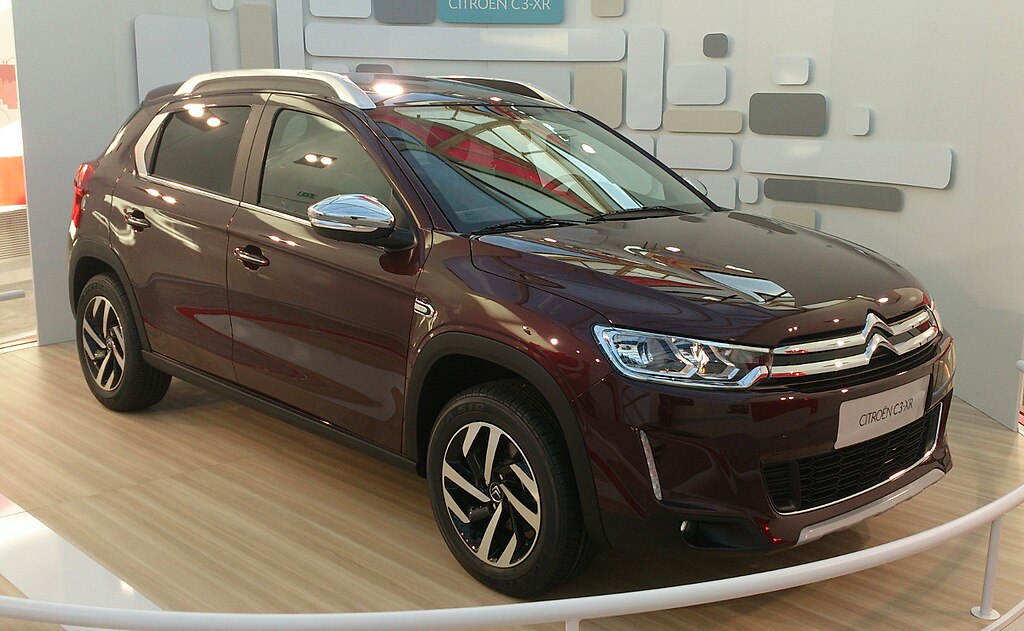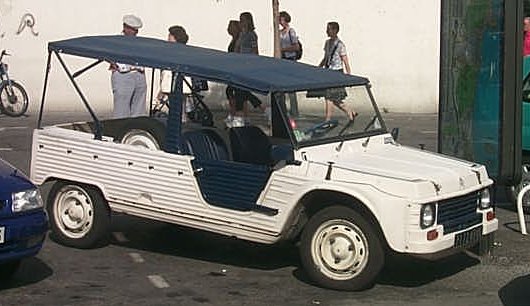Citroën C3 Aircross
The Citroën C3 Aircross is name designated to two SUVs produced by the French automaker Citroën. The first is the Brazilian version of C3 Picasso MPV, and the second is an urban SUV launched in 2017 that replaces the C3 Picasso in Europe.
First generation (2017–present)
The Citroën C3 Aircross for Europe is a mini crossover SUV from Citroën. Presented on 12 June 2017 in Paris, it has been marketed from October of the same year. The C3 Aircross was announced by the C-Aircross concept car, presented at the Geneva Motor Show 2017.
C3 Picasso (SUV trim package) (2010–present)
The Citroën C3 Aircross for Latin America is a C3 Picasso-based mini SUV, first announced by Citroën's Brazilian division in August 2010. The C3 Aircross is manufactured in Porto Real, Brazil, and was launched in Brazil and Argentina in September 2010.
Compared with the C3 Picasso, the restyled C3 Aircross has raised suspension, chrome roof bars, mirror covers, side skirts and a rear spare tyre. The Brazilian version is capable of running on E85 Bioethanol[6] and is based on the Peugeot 207 SW platform.
Ivan Segal, the managing director of Citroën of Brazil predicted sales of 30,000 Aircross models in a full year at launch, but lowered this expectation in 2011 to 2,000 Aircross models per month. Segal wanted to achieve this by targeting "young and adventurous" buyers.
2016 restyling
In the end of 2015, a facelifted version of the C3 Aircross was introduced in South America as a model for 2016. The most significant changes are a new front end. The non Aircross version was dropped.
Citroën C3-XR
The Citroën C3-XR is a China exclusive subcompact crossover from the Franco-Chinese joint venture Dongfeng Peugeot-Citroën.
The C3-XR is derived from the Citroën C3.
Citroën Lacoste
The Citroën Lacoste is a concept mini SUV designed by Citroën and Lacoste for the 2010 Paris Motor Show. It is a no-door mini SUV and should be very economical, featuring a 1.2 litre petrol engine emitting under 100g/km of CO2. The concept is 3.45m long, around half a metre shorter than a Nissan Juke. The concept has special features, including an inflatable roof that comes out of the centre roof rail. It also has a steering wheel that can be moved to improve access. The concept has no doors so that passengers are able to get inside. This concept was inspired by the 1970s Citroën Méhari and the 2007 concept, the Citroën C-Cactus.
Citroën Méhari
The Citroën Méhari was an off-road compact SUV produced by the French car maker Citroën, a variant of the Citroën 2CV. 144,953 Méharis were built between the car's French launch in May 1968 and 1988 when production ceased. A méhari is a type of fast-running dromedary camel, which can be used for racing or transport. A méhariste was a French Armée d'Afrique and Army of the Levant cavalryman that used these camels.
The Méhari was based on the Citroën Dyane 6, and had a body made of ABS plastic with a soft top. It also employed the 602 cc flat twin petrol engine shared with the 2CV6 and Citroën Ami. This is similar to the way the mechanical parts of the 1960 Mini became the 1964 Mini Moke.
A four-wheel drive version of the Méhari was produced from 1980 to 1983.
The standard Méhari weighs 535 kg (1,179 lb) and has the interconnected fully independent long-travel 2CV suspension used by all of the Citroën 'A-Series' vehicles.


























.jfif)




No comments:
Post a Comment